Indoor eustoma: growing and proper flower care
Eustoma - a flower with a foreign name and a beautiful appearance. The plant is often used to make bouquets for sale. But many gardeners are interested not only in the acquired inflorescences, but also in the possibility of planting them in their own personal plot. To do this, it is recommended that you familiarize yourself with the main characteristics, as well as with the rooting conditions of seedlings and seedlings of the original shrub.
Content
- Characteristic features of an indoor flower
- The choice of soil and container for the plant
- Reproduction methods and rules
- Conditions for keeping the plant
- Proper home care
- Everything you need to know about a transplant
- Diseases and pests of Eustoma
Characteristic features of an indoor flower
A plant with a difficult to remember name Eustoma is grown as a flowerpot pet, placed in a living room or other room. Eustoma belongs to the genus Gorechavkov. In the historical homeland in the regions of South and North America, as well as in Mexico and the Caribbean, the shrub reaches a height of 60 cm. While the real Eustoma tends to stretch up to 1 m and higher. Under indoor growing conditions, the shrub is grown as an annual plant.
Translated from Latin, the original plant is called "Beautiful Mouth". The ancient Indians told legends that for the first time a bush bloomed on the grave of an innocent girl. The latter refused to love the God of War. And for this she was punished with death. Eustoma was brought to Europe thanks to Patrick Brown, an Irish botanist and doctor. The shrub is a biennial herbaceous plant.
Features of the plant:
- The foliage is solid, large in size, oval-lanceolate, has a bluish-green tone.
- Deciduous plates are hard in structure, and externally have a waxy coating.
- Stems from the middle of the length begin to actively branch and form a whole bouquet, on which, in some cases, up to 3 dozen delicate inflorescences are located.
- The formed buds bloom in turn. This gives the impression of a long flowering.
- Flowers in their structure outwardly resemble a rose, but have a funnel-shaped notch. After full blooming, the inflorescence already looks like a large poppy.
- The varieties bred by breeders are distinguished by a variety of tones and unique shades.
In addition to all the distinctive characteristics, the main feature of the flower is that when cut, the plant is distinguished by long-term preservation of its original properties and qualities, does not fade for a long time. The bouquet, placed in a vase of water, gradually dissolves the buds throughout the month and continues to bloom until the last inflorescence.
The choice of soil and container for the plant
The ideal option for planting Eustoma is purchased soil for growing Saintpaulias. If you don't want to buy a substrate, you can prepare the soil yourself.This requires taking humus, garden soil and coarse river sand. Add a small amount of lime. Some gardeners claim that Eustoma grows well in the soil from tree bark and crushed peat. The combined components should be in a 1 to 1 ratio.
It is recommended to check before boarding acidity... The pH medium should be at the level of 6.5-7.0. If the soil turns out to be with high acidity, then there is the possibility of provoking zinc toxicity, which will slow down the development of the flower.
To root a plant and grow it at home, you need to take care of the soil and a suitable flowerpot.
In addition to preparing the soil, you should take care of the flowerpot in which the planting will take place. The container does not need to be taken deep, wide and not high will do. A pot of this format is needed due to the fact that root system plants do not go deep into the soil, but are mostly located in the upper layers of the soil substrate.
When landing on the bottom, a drainage layer must be laid. It is necessary to eliminate stagnant water in the ground. Otherwise, the root system, which is not highly developed, will die from rot or the development of a fungal disease. Some gardeners plant in one 2.5 liter to save space. flowerpot from 1 to 3 varieties of shrubs. It turns out a kind of composition of several inflorescences of different shades.
Reproduction methods and rules
To get a new plant, plant propagation is carried out only by the seed method. Getting a new shrub by dividing the rhizomes or rooting the cuttings does not work. When growing a variety of Eustoma, it is required to select high-quality planting material. Seeds are best purchased from a specialist store. At the same time, the brand that produces seedlings should be well-known. This is necessary so that after flowering, you get exactly the shade of the shrub that was assumed in the picture.
Many gardeners choose to purchase or exchange seeds with their acquaintances or people over the Internet. In this case, there is a possibility that the planted seeds will not sprout. This is due to the fact that it is possible to collect seedlings from the bush after ripening in order to further obtain the original plant with a full set of maternal qualities only in the second year of the life of the bush.
Breeding features:
- The seedlings of the plant are the smallest, they are in 1 gr. contains more than 10,000 pieces. Therefore, it is recommended to purchase planting material in special granules, pre-treated with nutrients for better germination and growth.
- You can plant seeds for seedlings at any time of the year, but it is best to carry out the procedure in early June until the end of July. Such a period of time is allocated so that the plant has time to build up the green mass and release the first buds by winter.
- Before planting, prepare the soil, after which it is well moistened. Granules with seeds are laid on top of it, but it is required to monitor the distance between the planting material, it should not be less than 5 cm.
- The soil is not poured from above, the granules only need to be slightly pressed into the soil. If you put earth on top, then the seeds simply cannot break through, and the released sprout will die under the weight of the soil substrate.
- After sowing, it is necessary to close the planting with plastic wrap. For quick germination, it is recommended to place the flowerpot on a well-lit windowsill and maintain the optimum room temperature.
In addition to planting in the ground, you can grow seeds when planting in peat tablets... A container designed for tablets, as well as a specially purchased mini-greenhouse with the installation of tablets in it, retains heat well and promotes the fastest germination of sprouts.
The first green shoots, regardless of the method of planting, appear only during the next 14-21 days.During this period, the soil in the flowerpot or tablets should be periodically moistened with a spray bottle and the container should be ventilated.
When the first leaves germinate, it is required to control the condition of the soil.
It should not be excessively wet or dry. When sprouts appear, irrigation of seedlings is required in the morning. This is necessary in order to prevent the development of a dangerous disease destructive for seedlings - black leg. To prevent disease, gardeners recommend spraying the plantings with a diluted Fundazole solution. In addition, it is necessary to accustom the seedlings to new living conditions: gradually open the film more than for airing, reduce the frequency of introducing nutrient moisture.
For the fastest germination above the sprouts, additional lighting with special phytolamps is required and the sunny day is increased to 12 hours. During the day, it is recommended to maintain the temperature at +18 .. + 20 C, and at night it should be lowered to +15 .. + 16 C. The duration of growing from seeds is regulated within 6-7 months from the appearance of the first sprout to the moment of flowering.
Conditions for keeping the plant
After germination, shrubs can be dived into separate flowerpots only after 2 months. After transplanting, they should be maintained in optimal conditions so that the plant continues to actively develop. You should adhere to certain rules:
- The location of the flowerpot - a flower requires a large amount of sunlight. On winter days, it is installed on the southern windowsill. In the summer, it is better to choose western or eastern. Such a rearrangement is necessary due to the fact that in summer the baking rays of the sun can burn the delicate foliage of the plant.
- Temperature - Eustoma is a thermophilic shrub. The optimum degrees for keeping a plant in room conditions is +20 .. + 24 C. At such degrees, the bush will form buds annually. At an increased temperature of +27 .. + 310C, the bush follows a 2-year formation of flowers: in the first year, there is a set of nutrients for the bud and its beginning of formation, and in the second, flowering occurs.
- Humidity - The Irish rose does not tolerate dry climates and dry air. Therefore, it is strictly forbidden to place the plant in an air-conditioned room. You should not install flowerpots with flowers on the windowsill, under which the heater is located. Moderate humidity is required.
In case of increased dryness, it is worth installing a tray with water next to it. Spraying the shrub is also not recommended. If irrigation is done from a spray bottle, then you need to make sure that no drops remain on the sheet plates. Otherwise, there is a possibility that fungal diseases will begin to develop.
If you adhere to all the requirements for the comfortable growth of an exotic flower, then it will respond with active flowering annually. In this case, the duration of budding increases, which leads to a longer flowering.
Proper home care
After the end of budding, the bush goes into a dormant stage. During this period, the plant must be pruned. A significant part of the shoots is cut, leaving only 2-3 stems with several internodes. The flowerpot should be placed in a cool room, where the air temperature is kept at +15 .. + 16 C. Watering is minimized and any additional fertilizing is eliminated.
With the beginning of spring days, young green leaves begin to break through on the shoots. In this process, the shrub is returned to its original place and the required care of the plant is again carried out.
When the shrub returns from dormancy and enters a new growing season, the following care recommendations are followed:
- Watering - the shrub is sensitive to this procedure. The root system does not tolerate the drying out of the soil substrate, immediately starting to dry out.The introduction of nutrient moisture is carried out when the soil dries 2 cm deep into the flowerpot. Watering is carried out in moderate amounts so as not to provoke waterlogging and the formation of a swampy substrate. Make sure that no excess moisture stagnates. To do this, after watering, it is necessary to drain the moisture, which, having saturated the ground, flowed out of the flowerpot into the pallet. For watering, you need to give up hard cold water, you need to pre-collect water in containers and stand at room temperature. Rainwater is best suited for irrigation. During watering, the stream is directed strictly at the root; if moisture gets on the leaf plates, there is a possibility of fungus development on the greenery of the shrub.
- Top dressing - Eustoma favors the addition of nutrients to the soil. It is especially important to carry out the procedure at the time of active budding. It is required to alternate mineral dressing and organic fertilizers... Nutrients and vitamins should be introduced 3-4 times a month. After a dormant period, it is worth paying attention to nitrogen-containing fertilizers, they stimulate the shrub to release young greenery and build up leaf plates. At the beginning of the formation of buds, the introduction of nitrogen fertilizers is stopped. This is due to the fact that nitrogen stimulates the increased formation of green mass, while flowering fades into the background and practically no buds are formed. In some cases, flowering is completely absent.
- Pruning - during the flowering of Eustoma, which begins its growing season in late January - early February, all faded buds and dried leaf plates must be removed. This process provokes the normal appearance of the shrub and the neatness of the plant.
Following simple rules for care will enable the plant to feel in natural conditions and delight with long flowering and active growth.
Everything you need to know about a transplant
Eustoma categorically does not tolerate the transplant, it begins to hurt and most often dies. This is due to trauma to the root system, which, after rooting in a new place, is not able to bounce back and continue normal growth.
Therefore, if a transplant is necessary, which is most often carried out in the form of seedlings, the shrub undergoes a transshipment procedure. This process is practically invisible to the plant, which allows it to develop normally in the future. Before transplanting, a flowerpot is selected a little larger than the previous container in which the flower was located.
The soil is selected strictly the same into which the plant originally rooted: light, good moisture and oxygen permeability. The pH medium should be neutral or slightly acidic.
At the time of transplanting, the flower is carefully removed from the old flowerpot so that the rhizomes are not damaged and set in the center of the pot. Drainage is laid out in the first layer in the flowerpot, and then covered with fresh soil to the middle of the pot. After installing the shrub on a new ground, a new nutritious substrate is poured from the sides and top. After the transplant, the soil is spilled abundantly.
Diseases and pests of Eustoma
The Irish rose is not interesting to pests and is rarely attacked by pathogenic bacteria. This is due to the fact that the inner juice of the bush has a bitter taste, which is not to the liking of harmful insects. In most cases, Eustoma is invaded by such parasites:
- Whitefly
- Aphid
- Spider mite
When the first signs of malaise are detected, it is necessary to immediately begin the therapeutic effect. If few pests are found, then they can be manually removed from the bush. But after the process has been completed, it is better to irrigate the plant with a prepared solution based on a recipe from medicinal herbs, garlic or tobacco.
If the pests, by the time they have already been noticed, have increased their population several times, then folk methods will not help.More serious methods of exposure should be used: use chemicals such as Ridomil Gold or Fundazol.
Although the bush is resistant to diseases, in some cases it is affected by the following diseases:
- Blackleg
- Powdery mildew
- Fusarium
- Gray rot
The factors that stimulate the formation of problems with the flower are increased soil moisture, a decrease in degrees in the room where the flower is located, and the lack of airing the room. To prevent diseases, it is required to start exposure at the first symptoms. chemical fungicides.
In any case, if the bush begins to wither or unusual spots appear on it, the condition of the plant should be carefully considered.
The reason may be not only a pest or disease, but also improper irrigation and an abundance of direct sunlight. Therefore, if a bush is unwell, you should immediately take the impact.
Thus, Eustoma is an exotic plant that requires specific care and the fulfillment of certain conditions during transplantation. The main thing is to monitor the general condition of the shrub and cut it off after flowering. Proper maintenance and prevention of diseases will allow the bush to actively grow and delight with bright and abundant flowering.
More information can be found in the video:



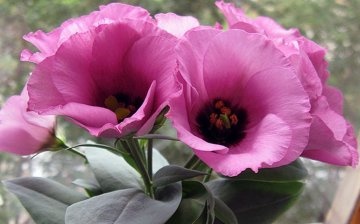

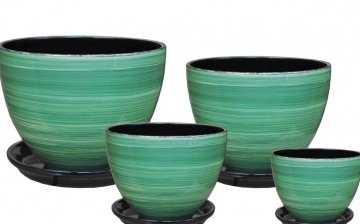
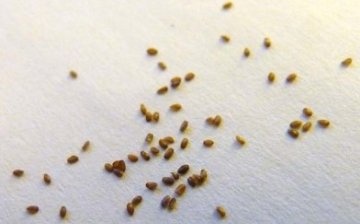
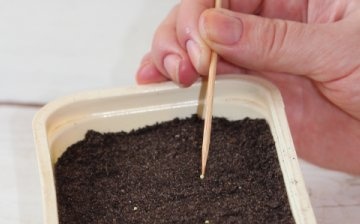
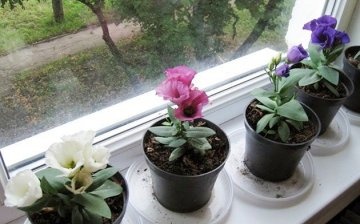
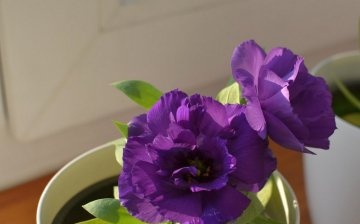
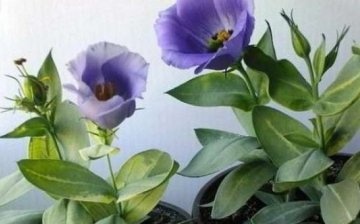










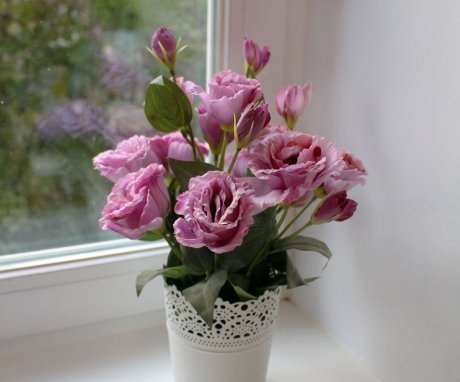
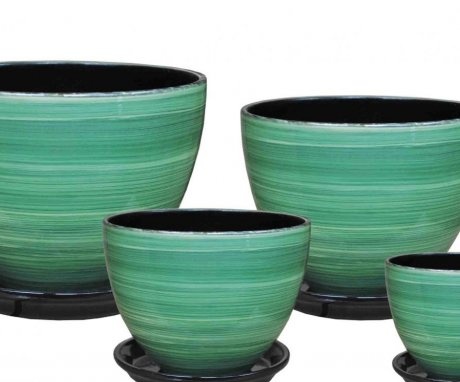

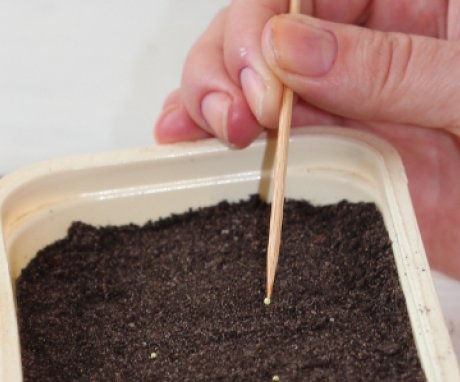
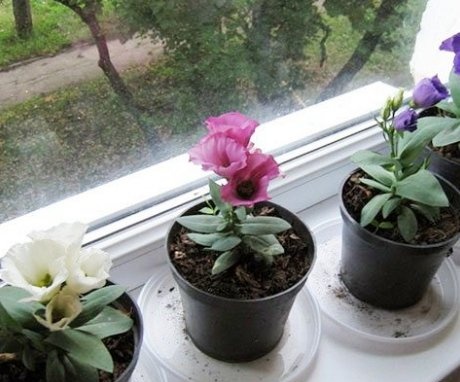

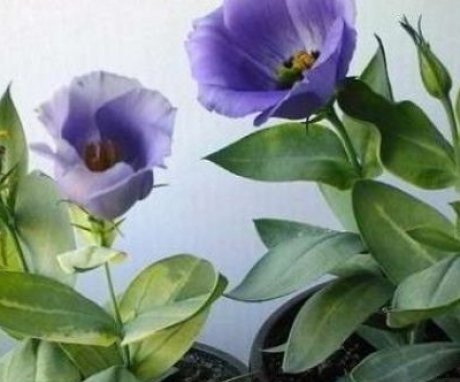
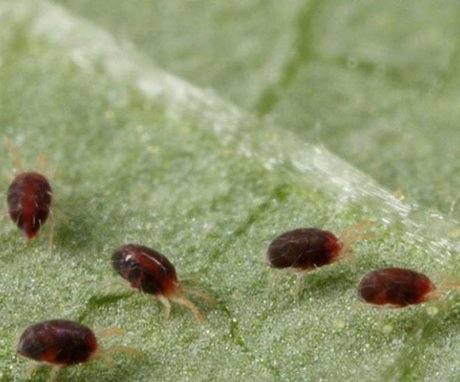
A beautiful indoor flower that grows on my windowsill and does not require special care, except for regular watering according to the schedule. Sometimes I feed, but not very often.
In fact, a very beautiful flower that I have been growing for about three years, it is very bright and does not require much maintenance. Basically, it is watering and fertilizing, I like that it is low but odorous.